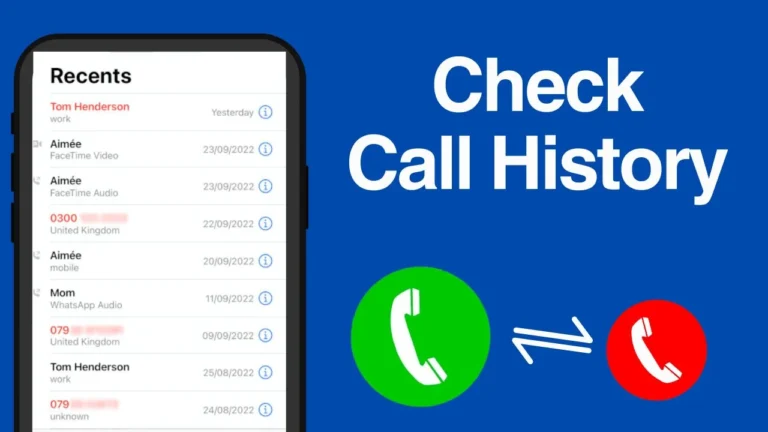How to Find the Nearest WiFi Password – (Full GUIDE)
In an increasingly digital world, access to WiFi is crucial. Whether you’re traveling, working remotely, or just need to stay connected, knowing how to find the nearest WiFi password can be a game-changer. This guide provides practical methods to help you locate and connect to WiFi networks efficiently.
Leverage Your Device’s Built-in Features
Using WiFi Settings:
Your smartphone or tablet’s WiFi settings are the first place to check for available networks. Both Android and iOS devices display a list of nearby networks. Simply go to Settings > WiFi to view the networks in range. Secured networks will prompt you to enter a password. If the network is public, you may be able to connect directly without a password.
Accessing Saved Passwords:
On Android devices, you can view saved WiFi passwords. Navigate to Settings > Network & Internet > WiFi, select the network, and view the password after authentication. iOS devices, however, don’t provide a straightforward way to view saved passwords directly from the settings.

Sorry! This Server is Slow
Please Try too Second Server
Utilize Public Resources
Asking Establishments:
When in cafes, libraries, or shopping malls, don’t hesitate to ask staff for the WiFi password. Most businesses are willing to provide this information to their customers.
Checking Receipts or Menus:
In many public places, WiFi passwords are listed on receipts, menus, or flyers. This is especially common in cafes and restaurants. Look for any signs or printed materials that might contain the password.
Use WiFi Finder Apps
WiFi Map:
WiFi Map is a popular app that provides a global database of WiFi passwords shared by users. After downloading the app, you can search for nearby networks and access their passwords. It also includes offline access to previously downloaded WiFi data, which is useful when traveling.
Wiman:
Wiman offers a map of WiFi hotspots and their passwords. The app allows you to find networks based on user contributions and includes offline functionality for convenience.
WiFi Finder:
WiFi Finder helps you locate WiFi networks and provides connection details. With a large database of public WiFi locations, it can be especially helpful for finding networks in new areas.
Explore Social Media and Community Resources
a. Local Community Groups:
Local groups on platforms like Facebook or Reddit often share information about available public WiFi networks. Search for local community groups and inquire about WiFi hotspots in your area.
b. Travel Forums:
Travel forums like TripAdvisor or Lonely Planet can be valuable resources for finding WiFi information in different cities. Travelers frequently share tips and network details that can be useful.
c. Social Media Check-Ins:
Sometimes, social media posts and check-ins include WiFi passwords. Search for posts related to the location you’re in to see if any users have shared the network details.
Ethical Considerations and Legal Aspects
Avoid Unauthorized Access:
Accessing a WiFi network without permission is illegal and unethical. Always seek permission before connecting to a network, and avoid using methods that bypass security protocols.
Respect Privacy:
Ensure that any WiFi password information you find through community resources or apps is intended for public sharing. Unauthorized access to networks is not only illegal but also a violation of privacy.
Use Secure Networks:
Be cautious when connecting to public or unsecured networks. Avoid accessing sensitive information or conducting financial transactions over unsecured WiFi connections. Consider using a Virtual Private Network (VPN) to enhance your security while connected.
Troubleshooting Common Issues
Verify Password Accuracy:
Ensure you have entered the correct password. WiFi passwords are case-sensitive, so double-check for typos or incorrect capitalization.
Restart Your Device:
Restarting your phone can often resolve connectivity issues. Turn your device off and on again to refresh network connections.
Forget and Reconnect:
If you’re having trouble with a previously connected network, try forgetting the network and reconnecting. Go to your WiFi settings, select the network, and choose “Forget.” Then, search for the network again and enter the password.
Update Your Device:
Ensure your device’s software is up to date. Software updates often include fixes for connectivity issues and improvements in network performance.
Preventive Measures and Best Practices
a. Secure Your Own WiFi Network:
If you manage a WiFi network, ensure it’s secure by using strong passwords and encryption. Regularly update passwords and monitor connected devices.
b. Avoid Public WiFi for Sensitive Transactions:
When using public WiFi, avoid accessing sensitive information like bank accounts or making online purchases. Use a VPN for secure browsing on public networks.
c. Be Aware of Phishing Attempts:
Be cautious of phishing attempts that may occur on public WiFi networks. Avoid clicking on suspicious links or providing personal information.
Conclusion
Finding the nearest WiFi password doesn’t have to be challenging. By utilizing your phone’s built-in features, leveraging public resources, using WiFi finder apps, and exploring social media and community resources, you can efficiently locate and connect to WiFi networks. Always prioritize ethical considerations and ensure you have permission to access the networks you connect to. With these strategies, you’ll stay connected wherever you go, ensuring you’re never too far from the digital world.




